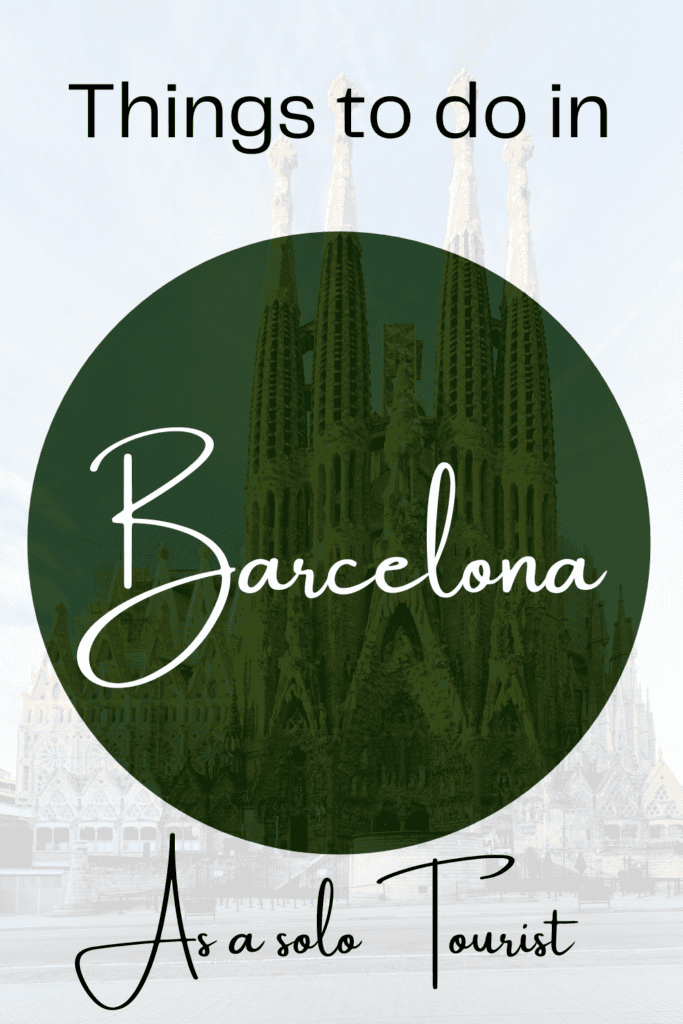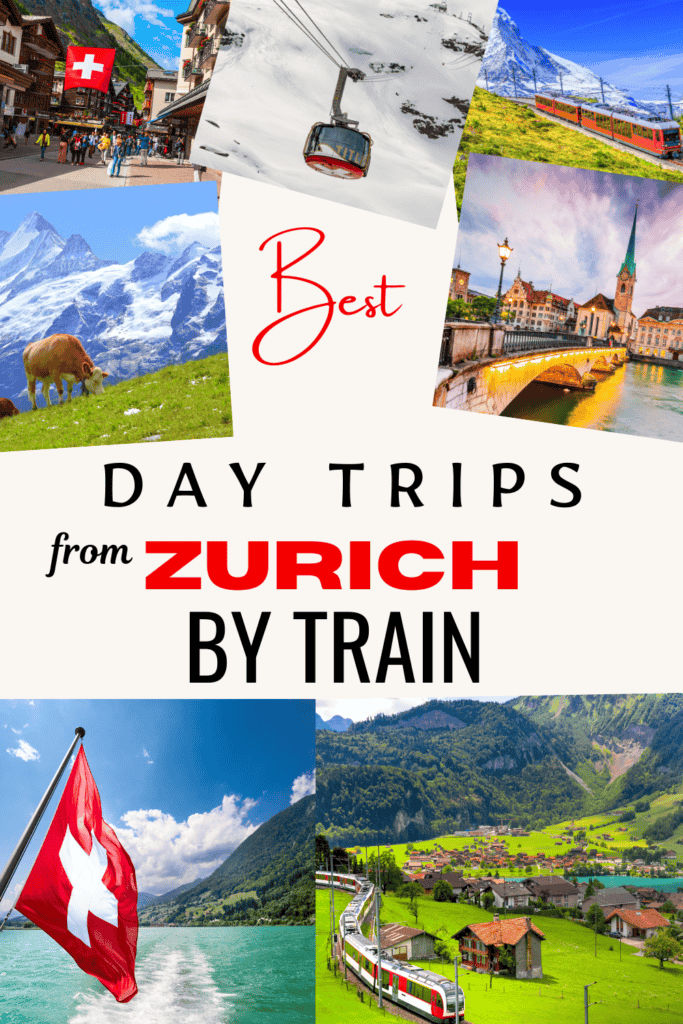Copenhagen is one of Europe’s most appealing capital cities, and the answer is simple: yes, Copenhagen is absolutely worth visiting.
This Danish city combines rich history with modern innovation in ways that few other destinations can match.
You’ll discover a city that excels in multiple areas that matter to travelers.
From world-class restaurants and stunning architecture to sustainable living practices and vibrant neighborhoods, Copenhagen offers experiences that appeal to many different interests.
Whether you’re drawn to exploring historic castles, trying innovative cuisine, or learning about cutting-edge design, the capital of Denmark delivers on all fronts.
The city’s compact size makes it easy to experience everything from iconic landmarks to local culture, plus you’ll get practical insights to help you plan your visit effectively.
Is Copenhagen Worth Visiting? The Top 10 Reasons
Copenhagen offers a unique blend of historic charm and modern innovation that makes it one of Europe’s most appealing destinations.
The Danish capital combines excellent food, walkable neighborhoods, cutting-edge design, and a culture focused on happiness and sustainability.
Vibrant Food Scene and Gastronomy
Copenhagen has become one of the world’s top food destinations.
The city is home to multiple Michelin-starred restaurants that showcase innovative Nordic cuisine.
Noma is perhaps the most famous restaurant, known for reinventing Scandinavian cooking.
You’ll find restaurants that focus on local ingredients like seafood, root vegetables, and foraged items.
Beyond fine dining, Copenhagen offers excellent casual food options:
- Smørrebrød – traditional open-faced sandwiches
- Food markets like Torvehallerne with local vendors
- Street food at Reffen and Paper Island
- Craft breweries throughout the city
The city’s food scene reflects Denmark’s commitment to quality and sustainability. Many restaurants source ingredients locally and focus on seasonal menus.
You can take food tours to explore different neighborhoods. The Vesterbro and Nørrebro districts have particularly strong food cultures with diverse restaurants and cafes.
Charming Historic Districts
Copenhagen’s historic areas offer well-preserved architecture and cobblestone streets.
Nyhavn is the most famous district with its colorful 17th-century townhouses lining the canal.
The Indre By (Inner City) contains the oldest parts of Copenhagen. You’ll walk through medieval streets and see buildings dating back hundreds of years.
Christianshavn features Dutch-style architecture and canals. This area was built in the early 1600s and maintains its historic character.
Key historic sites include:
- Rosenborg Castle with the Danish Crown Jewels
- Amalienborg Palace where the royal family lives
- The Round Tower from 1642
- Børsen – the old stock exchange building
Each district has its own personality. Frederiksstaden showcases royal architecture, while The Latin Quarter has narrow medieval streets around the old university.
Exceptional Art and Design
Denmark is known worldwide for its design philosophy. Copenhagen showcases this through museums, shops, and everyday objects throughout the city.
The Design Museum Denmark displays furniture, fashion, and decorative arts. You’ll see works by famous Danish designers like Arne Jacobsen and Finn Juhl.
Louisiana Museum of Modern Art sits just outside Copenhagen. It combines modern art with stunning architecture and coastal views.
Copenhagen’s design scene includes:
- Furniture stores selling iconic Danish pieces
- Fashion boutiques featuring Scandinavian brands
- Architecture that blends old and new styles
- Product design visible in everyday items
The city’s approach to design emphasizes function, simplicity, and quality. You’ll notice this in everything from street furniture to restaurant interiors.
Many galleries in the Meatpacking District show contemporary art. The area has transformed from industrial use into a creative hub.
Sustainable Urban Living
Copenhagen leads the world in sustainable city planning. The city aims to become carbon neutral by 2025 through innovative environmental policies.
You’ll see sustainability in action throughout your visit. District heating systems warm buildings efficiently.
Wind turbines generate clean electricity visible from the city.
Green spaces cover about 20% of Copenhagen:
- The King’s Garden near Rosenborg Castle
- Frederiksberg Gardens with lakes and paths
- Amager Beach Park – an artificial beach and nature area
- Cemetery parks that double as recreational spaces
The city promotes green transportation. Electric buses run on many routes. Harbor swimming is possible because the water is clean enough for bathing.
Waste management systems include extensive recycling and composting programs. Many restaurants and hotels follow strict sustainability practices.
Copenhagen shows how a major city can prioritize environmental protection while maintaining high quality of life.
Bike-Friendly City Culture
Copenhagen is one of the world’s most bike-friendly cities. About 40% of residents commute by bicycle daily, creating a unique transportation culture.
Bike infrastructure includes:
- Dedicated bike lanes separate from car traffic
- Traffic lights timed for bicycle speeds
- Bike parking facilities throughout the city
- Bike bridges connecting different areas
You can easily rent bikes from many locations. City bikes are available through app-based systems. Traditional bike rental shops offer longer-term options.
Cycling routes connect all major attractions. The harbor circuit takes you along the waterfront. Park routes go through green spaces away from traffic.
Biking gives you a local perspective on Copenhagen. You’ll move at the right pace to notice details and stop wherever interests you.
Safety is high for cyclists. Danish drivers expect bikes and follow traffic rules that protect cyclists.
Even with low crime rate, bike theft prevention is important – always lock your bike properly.
Scenic Canals and Waterfronts
Copenhagen’s location on the water creates beautiful scenery throughout the city. Øresund Strait separates Denmark from Sweden, while canals wind through urban areas.
Nyhavn canal is the most photographed spot. Colorful buildings reflect in the water, and boats line both sides of the narrow waterway.
Christianshavn canals offer a quieter water experience. You can take canal tours by boat to see the city from the water level.
The harbor area has been transformed for recreation:
- Harbor baths for swimming in clean city water
- Waterfront parks with walking and cycling paths
- Bridge connections between islands and districts
- Floating restaurants and cafes
Islands
within Copenhagen include Slotsholmen (Castle Island) where Parliament meets, and Amager with beaches and nature areas.
Water activities include kayaking through city canals and harbor swimming during the summer months.
The integration of water into city life makes Copenhagen unique among European capitals.
Canal cruise is a must in my opinion. With a canal tour you can enjoy scenic views.
The little mermaid statue is a must see for anyone visiting Copenhagen and one of the favourite spots for selfie lovers.
Rich Cultural Heritage
Copenhagen’s cultural scene reflects both traditional Danish culture and modern international influences.
Museums cover Viking history, royal collections, and contemporary art.
The National Museum tells Denmark’s story from prehistoric times. Ny Carlsberg Glyptotek houses ancient and French art in a beautiful building with a glass dome.
Music venues range from the famous Opera House to small jazz clubs. The Royal Danish Theatre performs ballet, opera, and plays.
Vibrant Food Scene and Gastronomy
Copenhagen has become a global food destination with world-class restaurants, traditional dishes, and bustling markets.
The city offers everything from award-winning fine dining to authentic street food experiences.
Michelin-Starred Dining at noma
Noma
stands as Copenhagen’s most famous restaurant and one of the world’s best dining experiences.
Chef René Redzepi created a new style of cooking that focuses on local Nordic ingredients.
The restaurant has earned multiple Michelin stars and was named the World’s Best Restaurant several times.
Noma changes its menu based on the seasons and uses ingredients like wild herbs, seaweed, and fermented vegetables.
Getting a reservation at noma is extremely difficult.
You need to book months in advance and expect to pay around $500 per person(something to be expected at Michelin-star restaurants).
The experience includes 15-20 courses that showcase Danish nature and creativity.
Copenhagen has over 15 other Michelin-starred restaurants beyond noma. These include Geranium, Alchemist, and AOC, giving you many high-end dining options.
Traditional Danish smørrebrød
Smørrebrød
is Denmark’s national dish and a must-try food in Copenhagen. These open-faced sandwiches use dark rye bread as the base and come topped with various ingredients.
Traditional toppings include pickled herring, roast beef, shrimp, or egg salad. Each sandwich is carefully arranged and eaten with a knife and fork.
The combinations follow specific rules that have been passed down for generations.
You can find excellent smørrebrød at restaurants like Aamanns, Schønnemann, and Ida Davidsen. Ida Davidsen offers over 200 different types of smørrebrød on their menu.
A typical lunch costs $15-25 per sandwich. Most places serve them only during lunch hours, usually from 11 AM to 3 PM.
Lively Food Markets and Street Food
Torvehallerne
is Copenhagen’s main food market with over 60 vendors selling fresh produce, prepared foods, and local specialties.
The glass-covered halls stay open year-round and offer both indoor and outdoor shopping.
You can buy Danish cheeses, fresh seafood, organic vegetables, and international foods.
Popular stalls include Hallernes Smørrebrød for traditional sandwiches and Ma Poule for French pastries.
Reffen serves as Copenhagen’s largest street food market with over 50 food trucks and stalls.
Located on Refshaleøen island, it offers cuisines from around the world at affordable prices.
Street food prices range from $8 to 15 per meal. Both markets offer seating areas where you can eat and enjoy the atmosphere with locals and tourists.
Unforgettable Sights and Iconic Landmarks
Copenhagen’s most famous landmarks showcase the city’s unique blend of historic charm and modern design.
From colorful waterfront houses to cutting-edge architecture, these three iconic spots capture what makes Denmark’s capital so special.
Stroll Through Nyhavn
Nyhavn stands as Copenhagen’s most photographed location. The 17th-century waterfront district features rows of brightly colored townhouses lining both sides of the canal.
You’ll find cafes and restaurants filling the ground floors of these historic buildings.
The area comes alive during warm months when outdoor seating spills onto the cobblestone walkways.
Key highlights include:
- Historic wooden ships moored along the canal
- Houses dating back to the 1600s and 1700s
- Hans Christian Andersen’s former residences at numbers 18, 20, and 67
The canal connects to Copenhagen’s main harbor. You can take boat tours from Nyhavn that show you the city from the water.
Evening visits offer a different experience. The colorful facades reflect in the calm water as lights come on in the windows.
Explore the Black Diamond Library
The Royal Danish Library’s modern extension earned the nickname “Black Diamond” for its striking dark exterior.
This architectural masterpiece opened in 1999 along Copenhagen’s waterfront.
The building’s glass and granite facade creates dramatic angles. Inside, you’ll discover reading rooms with harbor views and spaces for cultural events.
The library houses Denmark’s largest collection of books and manuscripts. Special collections include:
- Original Hans Christian Andersen manuscripts
- Medieval Nordic texts
- Modern Danish literature archives
You don’t need to be a student to visit. The building welcomes tourists who want to see its unique design and harbor views.
The slanted glass walls reflect the water and sky. This creates an ever-changing appearance throughout the day.
Marvel at the Copenhagen Opera House
The Copenhagen Opera House sits on Holmen island across from the old town. This modern venue opened in 2005 and cost over $500 million to build.
The building features a distinctive overhanging roof that extends over the water.
At night, the glass facade glows from within, creating a stunning reflection on the harbor.
Notable features:
- One of the world’s most expensive opera houses
- 1,400-seat main auditorium with perfect acoustics
- Panoramic views of Copenhagen’s skyline from the foyer
You can attend performances or take guided tours of the building.
The tours show you backstage areas and explain the advanced technical systems.
The opera house represents Copenhagen’s commitment to world-class culture and architecture. Its location provides perfect views back toward the historic city center.
Design, Art, and Architecture
Copenhagen stands as a global center for cutting-edge design and remarkable architecture.
The city blends simple Scandinavian style with world-class museums and striking buildings that range from historic palaces to modern masterpieces.
Modern Scandinavian Design
Denmark created the foundation of modern Scandinavian design that you see everywhere today.
Copenhagen showcases this design philosophy through clean lines, natural materials, and practical beauty.
You can visit design shops throughout the city to see furniture and home goods that focus on function and simplicity.
Danish designers like Arne Jacobsen and Finn Juhl started movements that changed how people think about living spaces.
The city’s design museums display both classic pieces and new works.
You’ll find everything from iconic chairs to modern lighting that shows how Danish design keeps evolving.
Key Design Elements:
- Clean, simple lines
- Natural wood and materials
- Focus on practical use
- Light colors and spaces
Renowned Art Museums
Copenhagen houses some of Scandinavia’s best art collections in buildings that are artworks themselves.
The National Gallery of Denmark holds centuries of European art in a beautiful historic setting.
You can explore contemporary art at several modern galleries scattered throughout the city.
These spaces feature both Danish artists and international works that show current trends in art and feature the city’s history.
Street art also plays a big role in Copenhagen’s art scene. Colorful murals and creative pieces appear on walls throughout different neighborhoods, adding energy to the city’s visual landscape.
The museums often combine permanent collections with rotating exhibits that keep the experience fresh for return visits.
Architectural Landmarks
The Black Diamond serves as Copenhagen’s modern royal library and shows bold contemporary architecture.
This striking black building sits along the waterfront and creates a dramatic contrast with older structures nearby.
You’ll find colorful townhouses lining the famous Nyhavn canal district.
These 17th-century buildings create one of the most photographed scenes in all of Denmark.
Copenhagen’s mix includes everything from medieval churches to cutting-edge concert halls.
The Opera House and other recent additions show how the city keeps building impressive new landmarks.
Notable Buildings:
- Black Diamond library
- Nyhavn historic houses
- Copenhagen Opera House
- Christiansborg Palace
Innovative Sustainable Living
Copenhagen leads the world in sustainable urban planning with a goal to become carbon neutral by 2025.
The city combines extensive green spaces with efficient public transport and cycling infrastructure which makes eco-friendly living both practical and enjoyable.
Green Spaces and Clean Environment
Copenhagen dedicates nearly 20% of its total area to parks and green spaces. The city features over 400 parks where you can relax and enjoy nature.
You’ll find innovative green solutions everywhere. Buildings use green roofs and walls to improve air quality. The city runs on clean energy from wind and solar power.
Copenhagen’s commitment to clean living shows in its air quality rankings. The city consistently ranks among Europe’s cleanest capitals.
Key green features you’ll experience:
- Extensive park network throughout the city
- Green roofs on buildings and bus stops
- Clean harbors where locals swim safely
- Wind-powered electricity grid
- Waste-to-energy plants that heat homes
The city’s green spaces aren’t just for show. They serve as community gathering spots where residents exercise, socialize, and connect with nature daily.
Public Transport and Bike Infrastructure
Copenhagen’s public transport system runs on renewable energy and connects every part of the city efficiently. The metro, buses, and trains operate on clean electricity.
You can use the Copenhagen Card for unlimited public transport access. This card also includes entry to many attractions, making it both convenient and cost-effective.
Cycling dominates daily transportation:
- Over 350 kilometers of dedicated bike lanes
- 40% of residents bike to work daily
- Bike traffic lights and dedicated bridges
- Free city bikes available for tourists
The bike infrastructure makes cycling safer and faster than driving.
You’ll see bike lanes separated from car traffic with their own traffic signals.
Public transport runs frequently with buses every 5-10 minutes during peak hours.
The metro operates 24/7 on weekends, making it easy to explore the city at any time.
Experience City Life Like a Local
Copenhagen lets you live like a Danish resident through its unique culture of hygge and authentic neighborhood markets. You can explore local districts where real Danish life happens every day.
You may like
Barcelona for solo female travelers
Other destinations worth visiting in Europe
Hygge and Danish Well-Being
Hygge
is Denmark’s famous way of finding happiness in simple moments. This Danish concept has no direct English translation but means creating cozy, comfortable feelings.
You can experience hygge in Copenhagen’s many cafes. Locals spend hours drinking coffee and talking with friends.
The warm lighting and soft furniture make these spaces feel like home.
Danish people practice hygge by slowing down their daily lives. You’ll notice this when you walk through Copenhagen’s streets.
People bike slowly, sit in parks, and take time to enjoy their surroundings.
Many Copenhagen restaurants focus on hygge too. They serve simple, quality food in relaxed settings.
You can try traditional Danish pastries while sitting by large windows watching city life.
The concept extends to Copenhagen’s design and architecture. Buildings use natural materials and soft colors.
This creates the calm feeling that makes Denmark famous for happiness.
Local Markets and Neighborhoods
Copenhagen’s neighborhoods each have their own personality and local markets.
Nørrebro is where young Danes live and work. You’ll find small shops, ethnic restaurants, and weekend markets here.
The Torvehallerne market near the city center sells fresh Danish food. Local vendors offer cheese, bread, and seasonal vegetables. You can eat lunch here like Copenhagen residents do.
Vesterbro used to be a working-class area but now attracts creative people.
The neighborhood has vintage shops, craft beer bars, and small galleries. Saturday mornings bring local farmers selling their products.
Christianshavn sits on an island connected by bridges. This area feels like a small Danish town within the big city.
You can buy groceries at local shops and eat at family-run restaurants.
Each neighborhood has its own bakery, grocery store, and corner cafe.
Shopping at these places instead of tourist areas gives you real Danish experiences.
Practical Tips for Visiting Copenhagen
The Copenhagen Card offers great value for tourists, while the city’s excellent public transport system makes getting around easy.
Copenhagen is one of Europe’s safest cities with simple navigation options.
Getting Around with the Copenhagen Card
The Copenhagen Card gives you free access to over 80 attractions and museums. This includes popular spots like Tivoli Gardens, Rosenborg Castle, and the National Museum.
The card also covers all public transport in Copenhagen. You can use buses, trains, metro, and harbor buses without buying separate tickets.
Card Options:
- 24 hours: Adult €59, Child €35
- 48 hours: Adult €79, Child €45
- 72 hours: Adult €94, Child €52
- 96 hours: Adult €109, Child €59
You need to visit 2-3 major attractions per day to make the card worth buying. Popular attractions normally cost €10-20 each.
The card comes with a guidebook and map. You can buy it online or at the airport, train stations, and tourist centers.
Staying Safe and Comfortable
Copenhagen is very safe for tourists. Crime rates are low and violent crime is rare.
Keep your belongings secure in crowded areas like Nyhavn and Strøget shopping street. Pickpocketing can happen but is uncommon.
Safety Tips:
- Use bike lanes correctly – don’t walk in them
- Watch for cyclists when crossing streets
- Keep valuables in hotel safes
- Carry copies of important documents
The weather changes quickly in Copenhagen. Bring layers and a rain jacket even in summer.
Most people speak excellent English. You don’t need to learn Danish, but locals appreciate basic greetings like “tak” (thanks).
Navigating Public Transport
Copenhagen’s public transport covers buses, metro, trains, and harbor buses. The system is clean, reliable, and runs frequently.
Buy tickets through the DOT Tickets app or at station machines. Single tickets cost about €3-4 depending on zones.
Key Transport Facts:
- Metro runs 24/7 on weekends
- Buses run every 3-7 minutes during peak hours
- All stations have English signs
- You can bring bikes on most transport
The city has four metro lines: M1, M2, M3, and M4. These connect major tourist areas and the airport.
Zone system determines ticket prices. Most attractions are in zones 1-2. The airport is in zone 4.
Day passes cost €16 and work for 24 hours from first use. This covers all zones and public transportation types in central copenhagen.
Is Copenhagen expensive to visit?
Now I have given you a good breakdown on prices and what to expect above, so depending on where you`re coming from, affordability depends on your finances.
But in my opinion, Copenhagen is fairly priced, if your finances can not let you spend a longer time in Denmark, a long weekend is all you need to explore this Scandinavian country.






